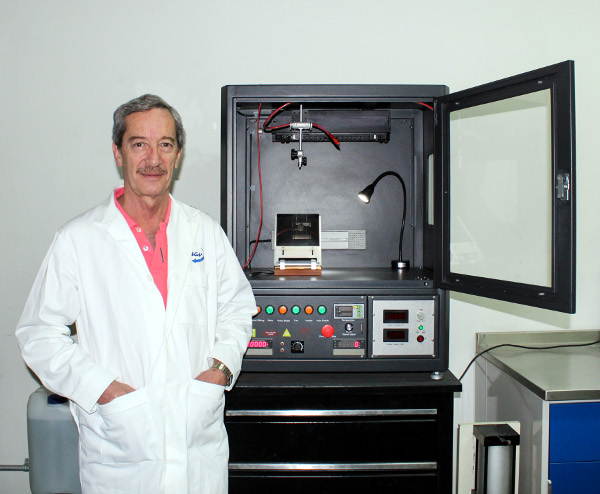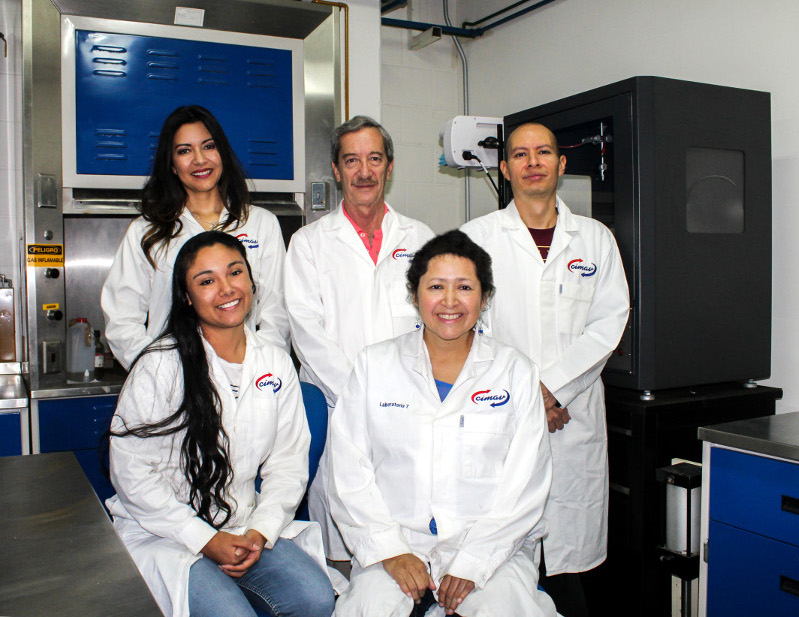Nanofibers

In Cimav, this working team studies the electronic structure of materials to set the scientific foundations to allow understanding and modifying the physical and chemical properties of materials, and in collaboration with specialists from other disciplines, develop applications for them.
Currently the research is focused on nanostructured materials, in particular metallic oxide nanofibers.
The study of nanostructures has the potential for application in a great number of areas, some of which are:
- Energy storage, in the generation of lithium ion batteries.
- In medicine, in the controlled drug delivery.
- In the development of gas sensors.
- In electronics, in the fabrication of optoelectronic devices.
- In textile engineering, to make more resistant fabrics with better thermal properties, as well as water and grease repellent fabrics.
This working group conducts their research at the theoretical and experimental levels in parallel.
At the theoretical level, they use numerical calculations based on first principles to evaluate the physical and chemical properties of materials and later the calculations are used as support to interpret experimental results.
The projects are conducted in the National Nanotechnology Laboratory (NanoTeCh), one of the most important in the country in this specialty, which is part of Cimav’s infrastructure.
In addition to this, the working team conducts research on the electric conductivity of materials (mainly semiconductors), especially those which show conductor or semiconductor properties, depending on the temperature they are subjected to. For instance, vanadium dioxide shows an insulator-conductor transition at a temperature of 68 °C.
In a different line of research, specialists in Cimav seek to determine the changes in optical properties of materials as a function of temperature, the so called thermochromics materials. One example of these materials is pans that, when they reach certain temperature, change the color of a circle spot they have in the center.
On the other hand, the specialists in this line of research also seek to generate magnetic properties in materials that do not present them in their pure state, but when impurities are generated or simply when they are taken to nanometric size they become magnetic.
For the development of some electronic and optoelectronic devices, it is essential that materials have certain electric and magnetic properties. It is thus important to control these properties, since their understanding may lead to the development of more efficient devices.
Thanks to the work carried out in this area the specialists have been generated articles that have been published in indexed journals with high impact factor, forming excellent human resources and collaborating with national and international institutions.
- Synthesis and characterization of nanostructured materials
- Metallic oxide nanofibers
- Nanoparticles
- Carbon nanotubes
- Theoretical-experimental study of the electronic structure of materials
- Electron energy-loss spectroscopy (EELS), in the environment of the transmission electron microscopy.
- Study of the transition temperatures of ferromagnetic and ferroelectric materials through Raman Spectroscopy.
- Ab initio calculations of materials properties, through the codes WIEN2k and VASP.
